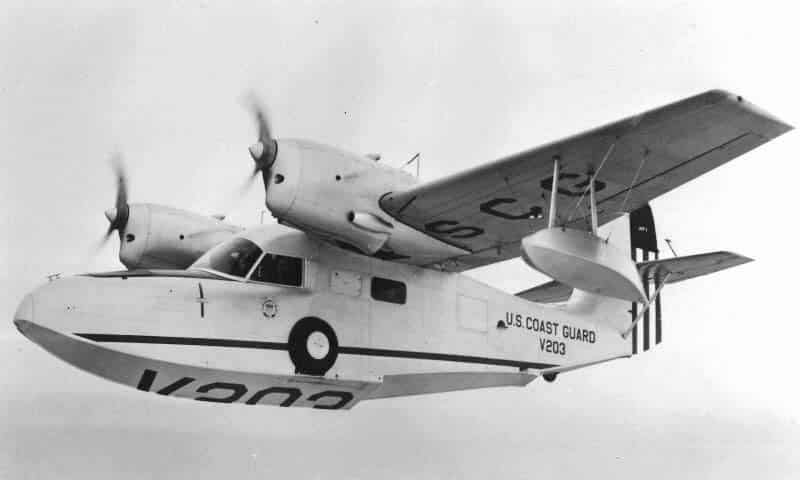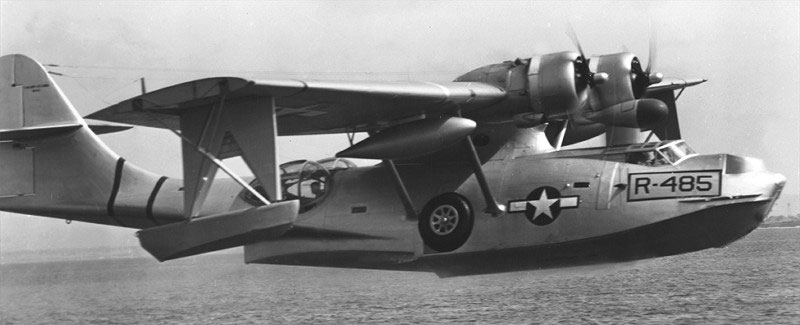During 1933 the Coast Guard was looking for a location to establish an Air station that would provide effective life saving and property protection in the upper Gulf of Mexico region. A site on the eastern edge of Biloxi Mississippi, with direct access to Biloxi Bay, was ideal for a seaplane operating area. A team headed by LCDR Carl C. Von Paulsen conferred with the Biloxi City Commission on the subject. The Commission was highly in favor of the proposal and made the six acre Point Cadet Park available. In late September, Mississippi Senator Pat Harrison announced that President Franklin D. Roosevelt had signed a bill authorizing $290,000 for construction of the air station. Land was cleared, a seawall and ramp were built, the approaches were dredged and a 120 x 100 steel-framed hangar was constructed. On 5 December 1934 the air station was placed in commission with LT. W.S. Anderson as commanding officer.
The first two aircraft assigned were JF-2 Ducks and a RD-4 Dolphin arrived in February. A PJ-2 was added in 1936. Aerial surveillance, looking for lost or disabled vessels, reporting wrecks and obstructions to navigation, hurricane warnings, and medical evacuations were all part of the stations responsibilities. Much of the commerce on the Gulf Coast was at that time involved in commercial fishing; and especially shrimping. There was a large shrimp-boat fleet and packing houses located in Biloxi. In cases of bad weather or when the need arose to contact fishermen for emergencies at home, flights would be made to inform the shrimpers since radios were not in widespread use during this period. Messages were delivered by means of a floatable wooden message block with a long yellow streamer attached. A written message was placed inside the hollowed out message block and dropped from the low and slow aircraft. The larger aircraft also made medical evacuations from ships far out to sea.

Several attacks were made on submarines in the area and a J4F out of Houma with Chief Aviation Pilot Henry White as the pilot and George Boggs as a crew member was credited with sinking the U-166. A diving expedition in recent times found the remains of the U-166 in a location different from that of the air attack. It coincided with the position of an attack made by a surface vessel several days prior to the J4F attack. It is not known for sure which submarine the air attack was made upon or if any damage was inflicted. Coast Guard aircraft did however regularly rescue crewmen from torpedoed merchant ships. Many times they directed surface vessels to the scene and on other occasions landed in the open sea to make pick-ups.
By the end of 1943 the U-Boat menace had abated. Patrols were still being made by the J4Fs and JRFs but for all practical purposes the air station was back in the search and rescue business. The PBY-5As arrived; the OS2Us had been returned to the Navy; and the RD Dolphins and Hall Boats were decommissioned and scrapped. In November 1944 an Air Sea Rescue organization was formed nationwide. The Coast Guard was placed in charge as the control agency with authorization to direct all Armed Forces resources to respond in life saving operations. In addition to the Coast Guard, the Navy and Army Air Force had both aircraft and rescue boats at various locations around the Gulf of Mexico. While any unit would immediately respond to an incident, the Coast Guard Control Center was simultaneously contacted so that all resources could be coordinated and effectively utilized.
The Biloxi air station had been designed for pre-war aircraft capable of operations in relatively shallow water. The post-war aircraft were proving to be larger and heavier than could be safely operated on Biloxi Bay. In March 1947, the air station was placed in care-taker status. Most of the stations assets were transferred to other Coast Guard Air Stations. One of the stations PBY-5A aircraft and crew were established as a detachment at Keesler AFB in Biloxi. The aircraft would be increased to two and in the early 1950s the PBYs were replaced by two UF-1G Grumman Albatrosses. The Biloxi detachment was closed in 1966 and assets were transferred to the new Mobile Air Station/Training Command.

